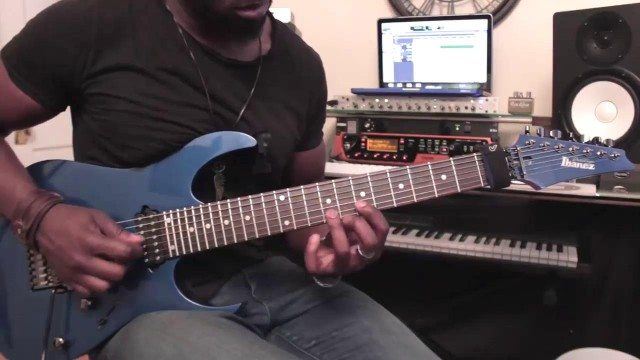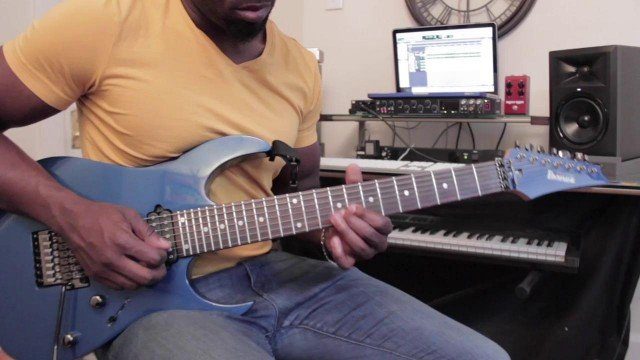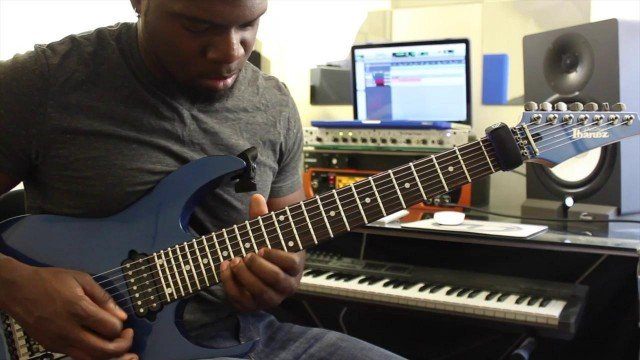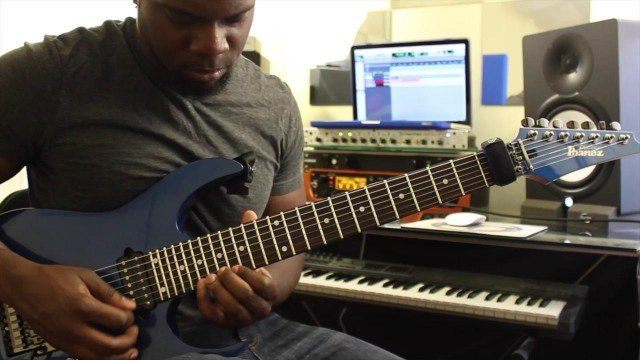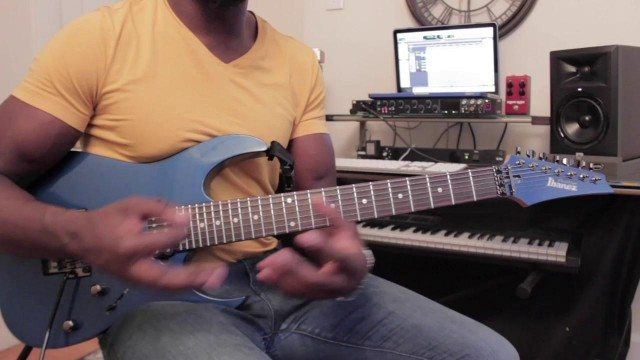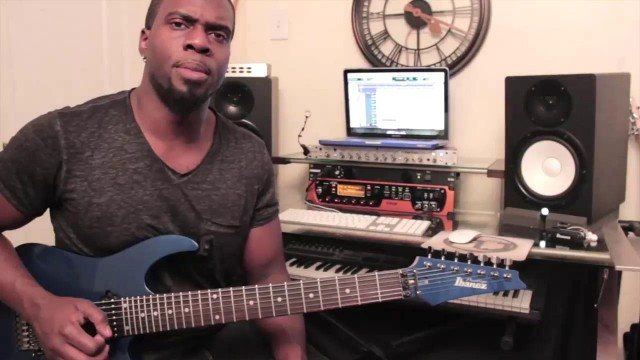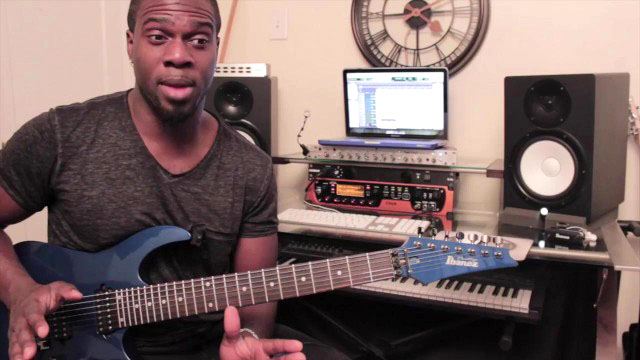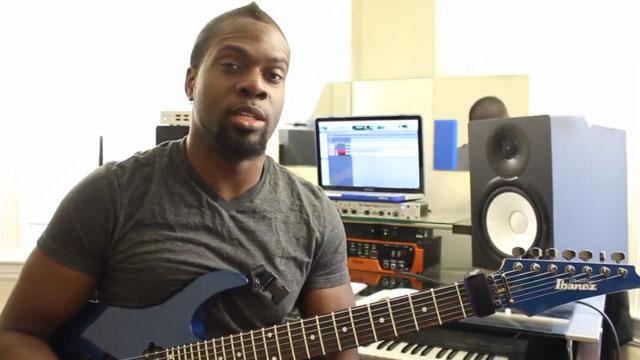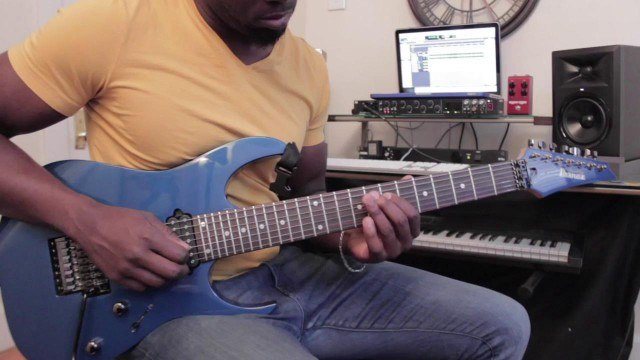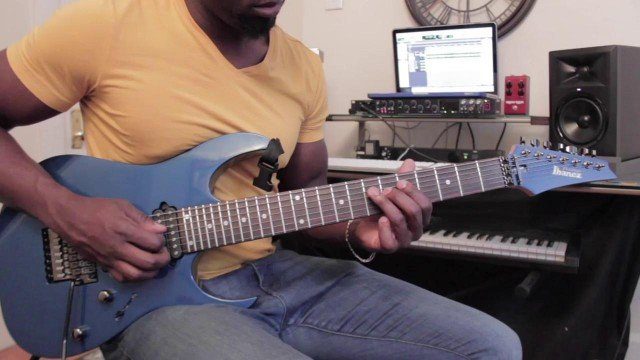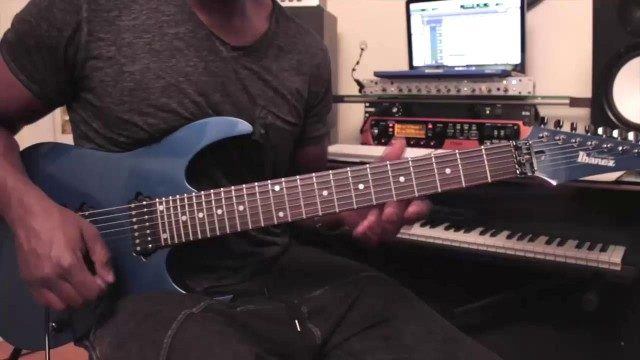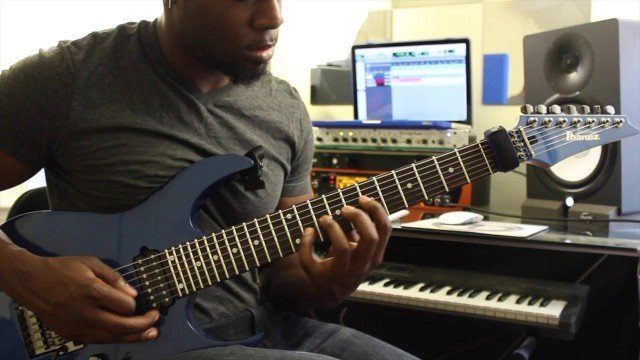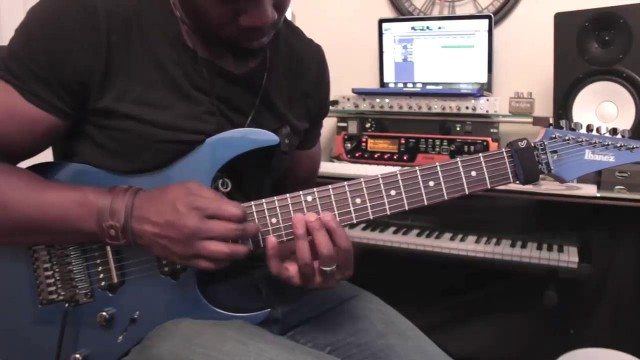Right then! Let's take a closer look at the solo.
Solo overview
Whenever I am learning a piece using a score, I always take time out to make some important observations indicated within the score rather than diving headfirst into it and potentially missing some very important aspects. I feel that it is essential to equip yourself with whatever information the score can give you; that way, you will find that you are mentally prepared for the challenge at hand, and are unlikely to be derailed by something which you hadn't prepared for. As the saying goes - "failing to plan is planning to fail", VERY, VERY important advice. Start by confirming the basics such as meter, tempo and key signatures. You can then move onto specific markings and accidentals which may indicate key changes(remember that key changes don't always appear on the stave). I always take this approach even when I have heard the music many times, so try to get into the habit of doing it everytime you study a score(I'll be reminding you in further lessons).
Now you will have acertained that the solo section is in common time(4 quarter beats per bar) at a tempo of 100bpm and that the key starts in Bb and modulates every 4 bars to the sub-dominant key. In actual fact, the music uses the phrygian mode of every key(the synth and bass riffs highlight this). So, rather than the keys of Bb - Eb - Ab and Db we have: D phrygian - G phrygian - C phrygian and F phrygian (all these being the 3rd note of each repective major key). I'd like to point out at this juncture that as there is a key change every 4 bars, it makes sense to digest the whole thing in 4 bar chunks to make it easier to tackle. Ok let's get to the actual solo!
Bars 1-4
There isn't anything that will really challenge you here however, it is essential to get the timing right with the control of the trem bar and the ensuing harmonic.
Bars 5-8
Throughout the next 4 bars is an ascending sequence which is based around the G blues scale(although there is a major 3rd at the opening of the sequence used as a passing note) alternating with the open G string as a pedal tone. Be sure to pay attention to the final note of the pattern and work as hard as you can on perfecting the intonation and the vibrato.
Bars 9-12
Again we have another sequential pattern starting in bar 9, this time making use of the melodic minor scale. Be aware of the arpeggios on beats 2 and 4 of bar 9 and beat 2 of bar 10 as they are all based on the dominant(G) of the C root. The position shifts should provide a worthwhile challenge for you. Pay close attention to the phrasing in the lick from bar 11 and try as much as you can to bring out the bluesy element of it. Don't miss the 1/4 note bend on the last 16th in beat four. This really helps to achieve that bluesy sound.
Bars 13-End
The key element in achieving the best results for this long fluid legato passage is to use the left hand only. Make sure that you break down each bar to be sure of the exact fingerings and it may be necessary to subdivide the bar if you are finding it particularly awkward. Try to relax the left hand as much as possible and don't try to force it. If you are doing it correctly, you should be able to play the line over and over without inducing left hand fatigue. In the video, I used the technique which is sometimes used by players such as Joe Satriani, Steve Vai and Yngwie Malmsteen to help control unwanted string noise. It also looks kinda cool too! You don't have to employ this technique, in fact you should be able to control the excess string noise without having to use that technique or string dampening tools.
Good luck with it and if you have any questions, head on over to the forum and give me a shout.












